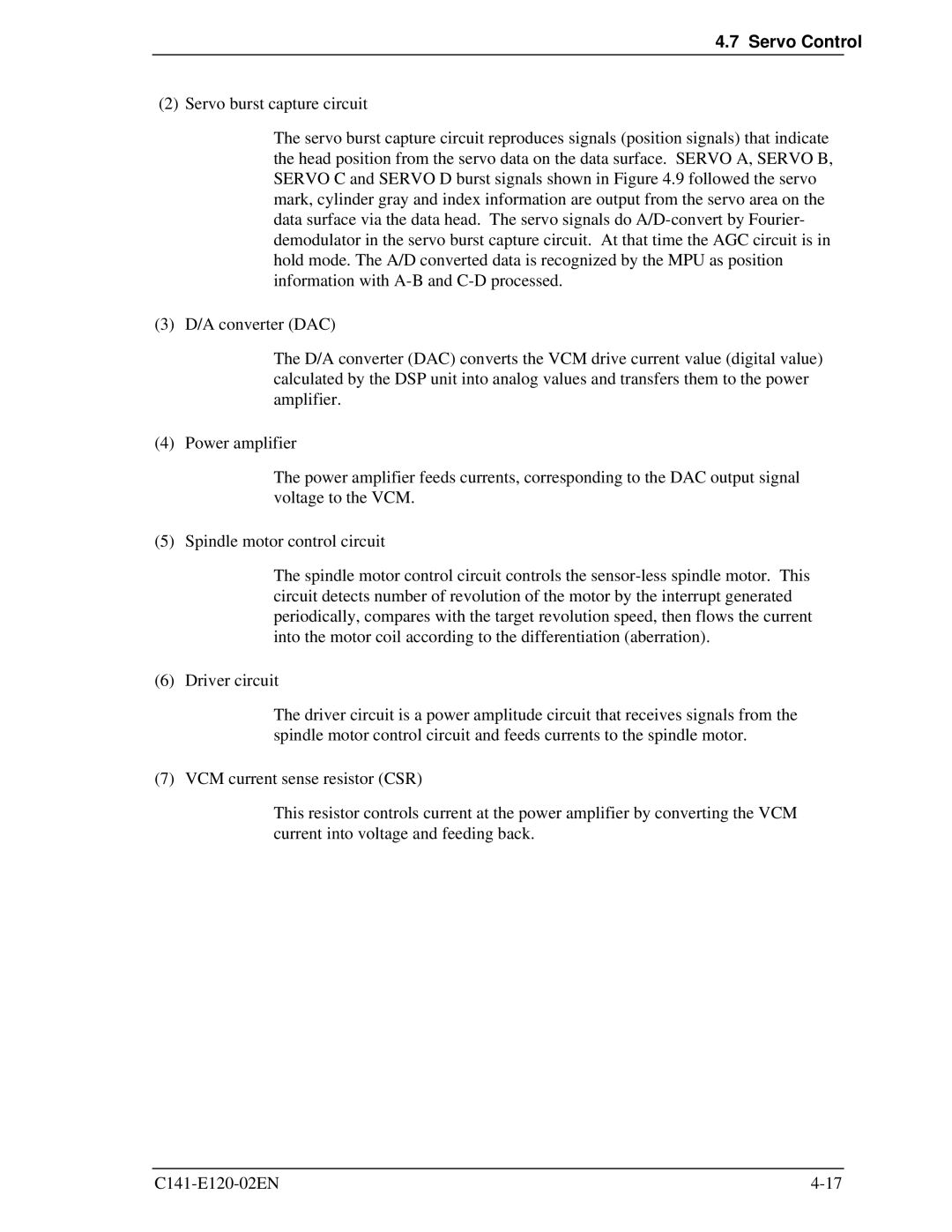
4.7 Servo Control
(2) Servo burst capture circuit
The servo burst capture circuit reproduces signals (position signals) that indicate the head position from the servo data on the data surface. SERVO A, SERVO B, SERVO C and SERVO D burst signals shown in Figure 4.9 followed the servo mark, cylinder gray and index information are output from the servo area on the data surface via the data head. The servo signals do
(3) D/A converter (DAC)
The D/A converter (DAC) converts the VCM drive current value (digital value) calculated by the DSP unit into analog values and transfers them to the power amplifier.
(4) Power amplifier
The power amplifier feeds currents, corresponding to the DAC output signal voltage to the VCM.
(5) Spindle motor control circuit
The spindle motor control circuit controls the
(6) Driver circuit
The driver circuit is a power amplitude circuit that receives signals from the spindle motor control circuit and feeds currents to the spindle motor.
(7) VCM current sense resistor (CSR)
This resistor controls current at the power amplifier by converting the VCM current into voltage and feeding back.
